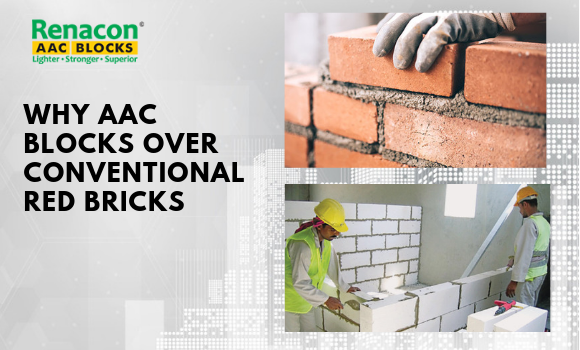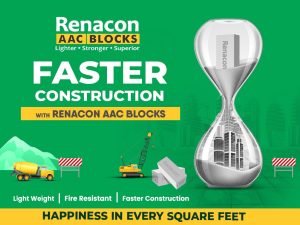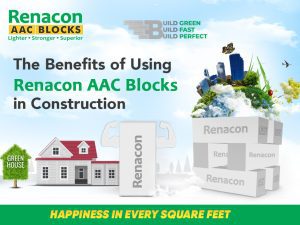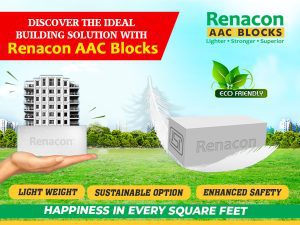
The Autoclaved Aerated Concrete blocks ever since its introduction in the Indian market have witnessed a massive turn around. The shift in focus from Red Bricks or the Clay bricks to the AAC blocks reflects a strong shift in the tide. The construction sphere specifically in India for long now have been dwelling with a choosy list of brick components and they being,
- Red Bricks
- Fly Ash – Bricks
- Solid Concrete Blocks
- CLC Blocks
Never did the industry experience a divergence until the evolution of Autoclaved Aerated Concrete Blocks. The lightweight concrete component’s longstanding history is proof of its reliability & strength. A brief insight on the history of AAC blocks can be well acquired from our earlier blog Autoclaved Aerated Concrete Blocks – A revolution in the Construction Sphere. This would provide you with ample information on the history of AAC blocks and its early arrival in the European market.

As described in the aforementioned statements, Bricks have been the predominant building material used for the masonry construction. These bricks over the years have come out in diverse forms, textures, and sizes owing to the varied needs of the customers. The Industrial Revolution, was the time period when the brick production skyrocketed to greater heights with the increase in market demand. This was exactly when the mechanised form of mass brick production came in to practice. From then on, the red bricks and clay bricks never looked back until the so-called newbie – Autoclaved Aerated Concrete Blocks evolved.
The AAC blocks might have experienced a slow invasion in the initial phases but then eventually they picked up its phase. And the sole reason for this being the competitive and substantial advantages that the AAC blocks possess.
Why a switch from Red Brick to AAC Blocks?
It is evident from the proofs and years of study that the Red bricks have been a convenient pick amidst the wide array of building materials used in India. They have been a popular yet reliable building component due to its reliability and affordable cost. And these blocks was widely accepted only until the AAC blocks ingress into the Indian market. Since it’s arrival in the Indian market, AAC blocks have occupied a strong foothold in the construction arena. For a brief portrayal on this, kindly refer our earlier blog AAC Blocks’ ingress into the Indian Market – The Evolution. The primary advantages of switching from Red Bricks to AAC Blocks are briefed below,

- Red bricks have a defined or standard size that restricts its usage on a wider scale. When put to comparison with the AAC blocks, they are found in varied sizes for easier adaptability and usage.
- Another pivotal factor of AAC blocks that outshines the Red Bricks is the weight component. The conventional Red bricks, due to its heavy composition and manufacturing technique weighs a lot more than the AAC blocks that are lightweight in nature.
- One of the major complexities with the Red Bricks has been the coarse aggregate phase which isn’t witnessed with regard to the AAC blocks.
- So if you think this is it then you are arriving at a false conclusion, there’s plentiful to brief on the advantages of AAC blocks over the conventional Red Bricks. And this, in fact, is just an introduction to a whole new world of Autoclaved Aerated Concrete Blocks.
So, stay intact and get to know the dominance of AAC blocks in our following blog posts.
Renaatus Procon is right here to provide you with all the needful information for a better choice of Building Material. Just give us a call to (+91 73738 73738) or you can email us at marketing@renacon.in. For further information kindly found us throughRenacon






